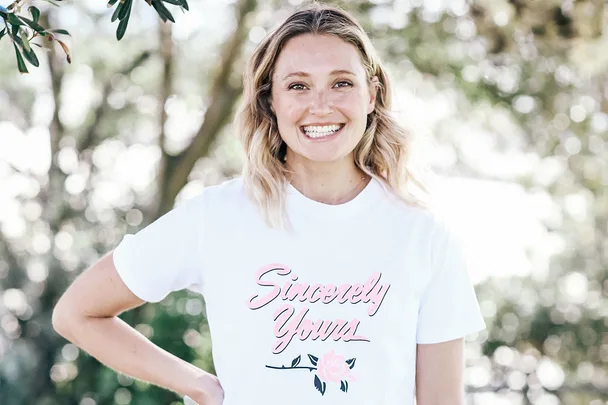These days I think of myself of a bit of a sustainability and natural beauty expert. Not because I have a science degree, or because I know the secret to living a simple life (the secret is it’s different for everyone, you guys!), but because in recent times I have immersed myself, and become passionate about the world of sustainable living.
Since starting Green + Simple a little over two years ago, I have discovered some truly great resources that have assisted my conscious consumer quest. There’s the Environmental Working Group’s Skin Deep catalogue which rates over 70,000 personal care products, annual Ethical Fashion Reports which rate fashion brands on transparency and sustainability, apps like goodonyou with a similar rating system, and eco documentaries like The True Cost – my favourite to date – Damon Gameau’s 2040.
Yet when it comes to the sustainability space sometimes things can still get confusing, even for a journalist who spends her days reading labels and studies and interviewing the experts.
So, I cannot tell you how blindingly mad it makes me when I am greenwashed. Which, believe it or not, happens a lot.
Greenwashing – AKA green sheen – is the marketing spin used by a brand or company to convince the consumer its product is natural, organic or sustainable, and often all three, when it’s not.
Take H&M for example. Last year they launched a conscious collection with celebrations the world over starting in LA, which has been followed up with a 2020 collection featuring polyester made from recycled PET bottles, recycled wool and organic cotton. On the surface, this ticks all my conscious consumer boxes, whilst also shining a global light on the critical need for fast fashion brands to lead the way in trialling innovative fibres.
And in fact, it’s worth noting H&M’s clothing recycling bins outside each store are one of the most sustainable ways to discard old clothing which is ripped or stained and unsuitable for a charity donation.
However, there is still the glaring omission that in the past H&M has destroyed a horrific $4.3 billion worth of never-before-worn clothing. And along with other big chains like Zara struggle with ensuring their garment workers are paid a living wage.
As a consumer, we are lured in with the promise of a better for planet or better for us choice, but it doesn’t change the fact that these brands are built on fast consumerism.
As a consumer, being greenwashed happens to me more often than I’d like to admit. All it takes is a rushed trip to the supermarket, a clever label design in muted green and white tones with words like ‘natural botanicals, organic, green, clean or sustainable’ and before I know it I am unpacking the groceries realising I have been had. And it makes me think, if I am being greenwashed, then so must everybody else? And how on earth are these companies allowed to get away with it?
According to the Australian Competition and Consumer Commission, there are voluntary standards growers and manufacturers should meet in order to label their products organic or biodynamic. However, because it is a voluntary standard, brands don’t have to actually meet the requirements in order to sell their products using labels like “organic” in Australia.
Paying a premium price for a product that’s better for me and for the planet is one thing, but paying a premium price for a product that is neither of those things – is maddeningly – another.
A good rule of thumb (which may or may not help as you race down the green beauty aisle) is; if the price of an organic or sustainable product seems too good to be true, it probably is!
How to avoid being greenwashed;
- Read the label; the first ingredient on the list is what makes up the majority of the product, and look for percentages, for example ‘made from 97 per cent organic ingredients’ means it’s the real deal
- Do your research; before you hit the shops have an idea of the products you want to buy, that way you won’t be lured in by flashy eco promises
- Ask questions; don’t be afraid to email your favourite brands if you have any questions, it might be the case that they have sustainable practices that you don’t know about.










